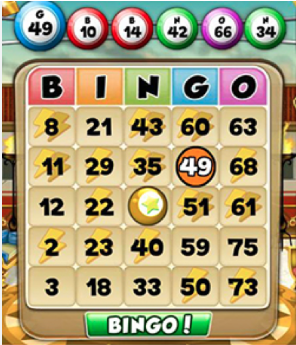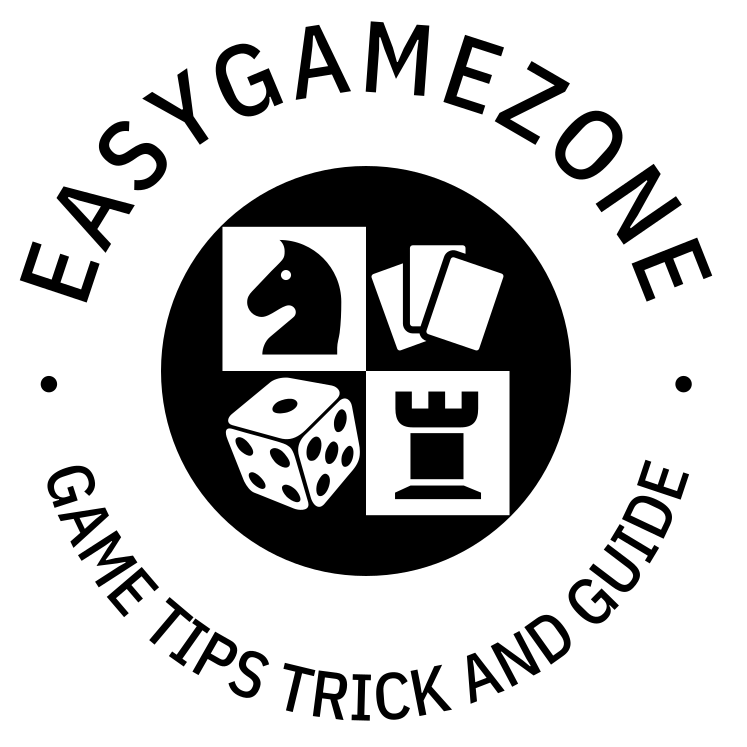The beloved game of bingo has entertained generations with its simple yet thrilling format. While an abundance of pre-made Bingo Cards are readily available for purchase, there’s a unique joy and personal touch in creating your very own. Custom Bingo Cards offer a fantastic way to personalize the game for any occasion, theme, or even educational purpose. In this comprehensive and easy-to-follow guide, updated for 2025, we’ll provide you with a fun and practical step-by-step tutorial for designing and producing your own bespoke Bingo Cards, ensuring your next game is truly one-of-a-kind.
The Appeal of Custom Bingo Cards

Why go to the effort of making your own Bingo Cards when mass-produced ones are so accessible? The advantages are numerous:
- Personalization: You can tailor the cards to a specific event (e.g., a birthday party, baby shower, corporate team-building, or holiday gathering), incorporating themes, inside jokes, or relevant imagery.
- Educational Tool: Teachers often create custom Bingo Cards for learning, filling squares with vocabulary words, math problems, historical dates, or scientific terms.
- Unique Gameplay: Instead of just numbers, you can use pictures, actions, or specific phrases, transforming the game entirely.
- Cost-Effective: If you have the time and materials, printing your own can be cheaper for large gatherings than buying many pre-made sets.
- Creative Outlet: It’s a fun, creative project that allows you to express your artistic side.
Step-by-Step Tutorial: How to Create Your Own Bingo Cards
Follow these detailed steps to design and print your personalized Bingo Cards:
Step 1: Decide on the Size and Format of Your Bingo Cards
The first crucial decision in creating your custom Bingo Cards is determining their size and overall format.
- Standard Size: Traditionally, Bingo Cards are laid out in a 5×5 grid (five columns and five rows). This is the most common format for numerical bingo, with the center square often designated as a “FREE” space.
- Customization: However, you are absolutely free to customize this!
- For shorter, quicker games, you might opt for smaller grids like 3×3 or 4×4.
- For more complex or longer games, you could explore larger grids.
- Consider the age of your players: younger children might benefit from larger squares or fewer items per card.
Step 2: Create a Table in Your Word Processor or Spreadsheet Software
Once you’ve settled on the size of your Bingo Cards, it’s time to translate that into a digital format.
- Software Choice: The easiest tools for this task are standard word processing programs (like Microsoft Word, Google Docs, Apple Pages, LibreOffice Writer) or spreadsheet software (like Microsoft Excel, Google Sheets, Apple Numbers, LibreOffice Calc).
- Table Insertion:
- In a Word Processor: Go to “Insert” -> “Table” and select the desired number of columns and rows (e.g., 5 columns and 5 rows for a standard card). Adjust cell size to make large, clear squares.
- In a Spreadsheet Program: Simply select the desired number of cells (e.g., A1 to E5 for a 5×5 grid), then apply “Borders” to all selected cells to create your grid lines. You can also adjust column width and row height to create perfect squares.
- Add “BINGO” Header: For traditional bingo, create a row above your 5×5 grid and merge the cells to form a single wide cell. Type “B”, “I”, “N”, “G”, “O” in the cells directly above each column of your grid.
Step 3: Populate Your Bingo Cards with Numbers, Images, or Text
This is where the fun and customization truly begin! You’ll fill each square of your Bingo Cards with the content relevant to your game.
- Numerical Bingo:
- Standard Ranges: For a traditional 75-ball bingo game:
- “B” column: Numbers 1-15
- “I” column: Numbers 16-30
- “N” column: Numbers 31-45 (the center square is usually “FREE”)
- “G” column: Numbers 46-60
- “O” column: Numbers 61-75
- Randomization is Key: Crucially, ensure that the numbers in each square are chosen randomly within their respective column ranges. Avoid simply listing them sequentially.
- “FREE” Space: For a 5×5 card, leave the center square of the “N” column blank or explicitly label it “FREE.”
- Standard Ranges: For a traditional 75-ball bingo game:
- Image/Picture Bingo:
- Theme-Based: This is perfect for themed parties (e.g., “Baby Shower Bingo” with baby items, “Christmas Bingo” with festive images).
- Insertion: Insert images directly into each square of your table. You can use clip art, stock photos, or pictures you’ve created.
- Clear Visibility: Ensure the images are large enough and clear enough for players to easily recognize them from a distance.
- Text/Word/Phrase Bingo:
- Educational: Fill squares with vocabulary words, historical figures, scientific terms, or math problems.
- Event-Specific: For a party, squares might contain “Someone wearing red,” “Someone who can sing,” “Someone born in 2025.”
- Clear and Concise: Keep text brief and easy to read.
Step 4: Add a Title and Decorations
Once the core content of your Bingo Cards is complete, it’s time to make them visually appealing.
- Title: Add a clear and engaging title at the top of your document, above your bingo grid. This could be simply “Bingo,” or something more specific like “Sarah’s Birthday Bingo,” “Holiday Movie Bingo,” or “Team Building Bingo Challenge.” Use a larger, bold font for the title.
- Decorations:
- Borders: Add decorative borders around the entire card or around individual cells using your software’s formatting options.
- Background Color/Image: Apply a subtle background color or a themed background image to enhance the card’s visual appeal.
- Font Styles: Experiment with different fonts for the numbers or text, but prioritize readability.
- Logos/Branding: For corporate or special events, you might include a logo.
Step 5: Print and Prepare for Play
With your custom Bingo Cards looking great, the final step is to bring them to life!
- Print: Print off your designed Bingo Cards. For durability, consider printing on slightly thicker paper or cardstock. Print multiple copies, ensuring each card is unique (see “Tips and Tricks” below).
- Cutting: If you’ve designed multiple cards per page, carefully cut them out.
- Daubers/Markers: Provide players with small objects to mark the numbers or images called out during the game. Common markers include:
- Beans (dry beans)
- Coins (pennies)
- Buttons
- Small plastic discs (bingo chips)
- Stickers
- Crayons or markers (if you’re okay with cards not being reusable)
Essential Tips and Tricks for Superior Bingo Cards
- Ensure Image Clarity: If your Bingo Cards use images, double-check that they are sufficiently large, clear, and distinct from one another. Players need to be able to easily identify them from their cards.
- Vary Colors for Readability (Numerical): For traditional numerical Bingo Cards, consider using different colors for the numbers in different columns or rows. For example, numbers in the “B” column could be blue, “I” green, “N” red, etc. This helps players quickly locate numbers as they are called.
- Crucial: Alter Each Card to Prevent Duplications! This is paramount if you’re generating multiple Bingo Cards for a large gathering. If every player has an identical card, multiple people will get Bingo at the same time, diminishing the fun.
- Manual Randomization: For smaller batches, manually change a few numbers/images on each printed card.
- Spreadsheet Formulas: For larger batches, use spreadsheet formulas (like
RANDBETWEENin Excel/Sheets) and then “copy and paste special (values only)” to randomize numbers within ranges for each column before printing. - Online Bingo Card Generators: If you need many unique cards and don’t want to use complex spreadsheet formulas, search for “free custom bingo card generator” online. Many websites allow you to input your list of words or numbers and will generate multiple unique cards for you to print.
- Test Your Cards: Before a big event, do a quick test run with a few of your custom Bingo Cards to ensure everything is legible and functional.
- Create a “Call List”: For the caller, prepare a separate list of all the numbers, images, or words you’ve used across all your cards. Cut these into individual slips, put them in a bag or bowl, and draw them randomly during the game. This ensures every possible item can be called.
Crafting your own Bingo Cards is a rewarding project that adds a personalized flair to any game. By following these steps and tips, you’ll be well on your way to hosting a memorable and uniquely fun bingo experience.
And for those times when you want a quick game on the go, remember you can always download popular digital bingo games: Android, IOS
Bingo Blitz Related Posts :-
- Bingo Blitz Freebies 2024: Get Daily Working Links
- Bingo Blitz Basics: Step-by-Step Guide for New Players
- Rules of Bingo Blitz: How to Play, Tips, and Strategies
- Maximizing Your Free Credits in Bingo Blitz: Tips and Tricks
- Power-Up Secrets Revealed: Bingo Blitz Tips & Tricks
- Comprehensive Guide to XP in Bingo Blitz
- Unraveling Bingo Calls: Your Complete Guide to Phrases and Meanings
- Guide to Collecting Valuable Collection Items in Bingo Blitz
- The Top 7 Rooms in Bingo Blitz You Can’t Miss
- Bingo Cards: Step-by-Step Guide to Easy Making Your Own
